(July 28, 2023) Kiveshan Thumbiran is an Indian-origin artist, born and raised in South Africa. Like his identity, his creations are a blend of both Indian and South African elements. The artist amalgamates Hindu mythology and iconography with the imagery, incidents, and stories of contemporary South Africa to express his perspective as an individual who does not completely belong to either of the two nations. Recognising the prevailing lack of awareness about Indian religion and culture in South Africa, one of his primary goals is to enlighten the masses and foster equal respect for Indian culture in the African nation.
“In South Africa, Indian people are a minority who are often pushed to the back in social settings. Many Indian people adopt Western behaviours to fit in. For me, my pride in my culture is a resistance to fit the norm. Hence my interest in Hindu mythology,” Kiveshan tells Global Indian adding “The Indian mythology allows me to interpret the world as I see it in a way that is comfortable to me.”
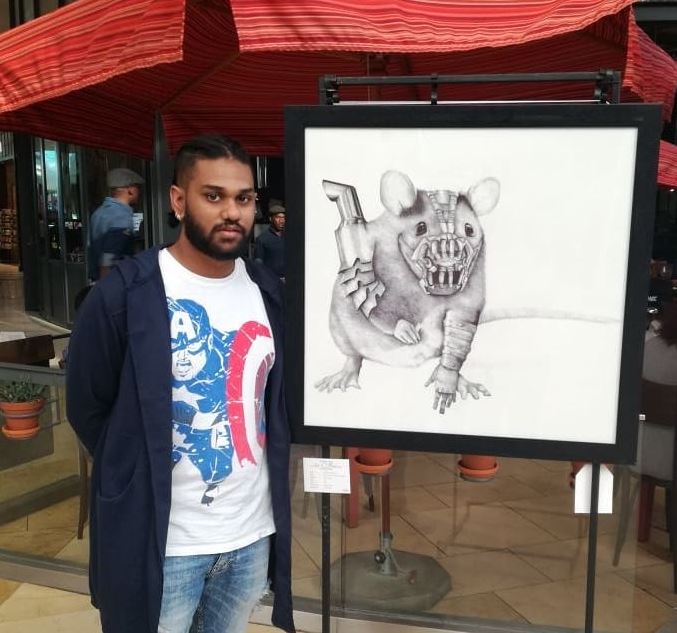
Kiveshan Thumbiran
Born and raised in Lenasia, a suburb in the city of Johannesburg, Kiveshan had a childhood filled with diverse play experiences, which also included crafting his own toys. Watching the TV show ‘Ramayana’ by Ramanand Sagar was a customary activity in the Thumbiran household. The show inspired young Kiveshan to replicate the mythological series’ weapons to play with. This early exposure marked the beginning of his fascination with mythology, which gradually evolved into a distinctive form of artistic expression. Today, as a practicing artist, Kiveshan channels his passion for mythology, making it a prominent tool in his creative repertoire.
Strong influences
“My mother hails from Gujarat, and my father was a descendent of indentured labourers from Tamil Nadu who were brought to South Africa during colonialism,” he shares. As his parents worked full time, Kiveshan grew up spending lots of time with his maternal grandparents who taught him about the Hindu culture.
“They often highlighted that our culture is something to be celebrated, to engage with and to be proud of,” he says adding “My grandmother used visuals from the Ramayana to impart lessons to me and my siblings while my late grandfather taught us about the nuances of our Hindu faith.” Both his grandparents have had an indelible mark on Kiveshan’s outlook.
He thinks of his grandfather who passed away in 2007 as an artisan of many talents. “From carpentry and woodwork to tailoring, he was truly multi-faceted. He believed that knowing our roots and paying homage to our ancestors and culture would keep us in good stead no matter where we end up in life,” Kiveshan remarks. His absence is still painful for the artist, but his memories serve as a strong motivator when he is feeling low.
“He was like a pillar to everyone around me, and his personality encourages me to go beyond my limits to help every child in a bad space who is thinking to give up in life,” he remarks adding, “My grandfather would have loved to see me graduate and learn Indian classical music, but he passed away before that.”

One of the art works of Kiveshan Thumbiran
In the path of art
Unlike many artists, Kiveshan did not think of making art as a career when he was a child. “I often made dragons from my mother’s clothes pegs. This led me to develop my drawing and sketching skills – to envision and to create,” he says adding, “The high school that I attended did not have any art programme, so I ended up teaching myself how to draw by consulting different books. The subjects in high school prepared me for a standard desk job but I wanted to do something else and applied to pursue fine arts at the University of Johannesburg, and luckily got accepted.”
Today, Kiveshan is a known face at art exhibitions. For him, these events serve as an excellent means to stay abreast of developments in the field while providing ample opportunities for continuous exploration. Additionally, he actively takes on commission work. “I am always open to creating art as long as someone reaches out,” says the artist whose fields of specialisation range far and wide.
He is into drawing, sculpture, painting, printmaking, and more modern practices such as photography, videography, and digital art.
Kiveshan obtained his National Diploma (N-Dip), Baccalaureus Technologiae (B-Tech), and M-Tech in visual art from the University of Johannesburg and serves as a lecturer at Stellenbosch University. He has also served as the coordinator for the new media studies course which earned him the first prize for ‘Innovation in Higher Education using Technology’ at the Excellence in Education Awards hosted by iStore and ThinkAhead. For the impactful message that his art conveys, Kiveshan Thumbiran has received many awards and accolades, the most recent being one of the M&G’s 200 Young South Africans – the Mail and Guardian’s 18th edition of celebrating the efforts of South African trailblazers.
View this post on Instagram
Artist with purpose
The photography and digital media lecturer at Stellenbosch University’s visual art department teaches and supervises students from first year to master’s level while actively being engaged in research through art-based methodologies.
As a young Indian lecturer of colour, his mission involves transforming and decolonising the tertiary education space through his teaching and research. Through his art, he aims to challenge the boundaries that define who can identify as African and confront problematic issues within South Africa, including the challenges of tokenism.
Kiveshan has been paving the way for the Indian diaspora to participate in the country’s art scene and contribute to reshaping South Africa’s artistic landscape with diversity and inclusivity.
“Art can communicate where words fail. It’s a tool for creative problem-solving. Artists possess a unique ability to approach problems and address social issues from perspectives that may not have been considered by others before,” tells the teacher who motivates his students to make use of their unique abilities to bring change.
Deeply passionate about South Africa, his vision for the country’s future is one where there are minimal or no distinct social classes, and it becomes a place of abundance and prosperity for both the native-born citizens and the ones who have migrated.
Finding joy in music
Indian mythology is part of Kiveshan’s creative pursuits in more ways than one. Not only does he engage with it artistically, but also has a strong connection to it through his musical pursuits. He is adept at singing bhajans and proficiently plays the harmonium and sitar. “My mother sent me and my siblings to singing classes, however, I was impatient with classical music as a teenager and instead took the harmonium to the mandir to teach myself how to play it along with people singing, honing my skills and training my ears in the process,” he shares.
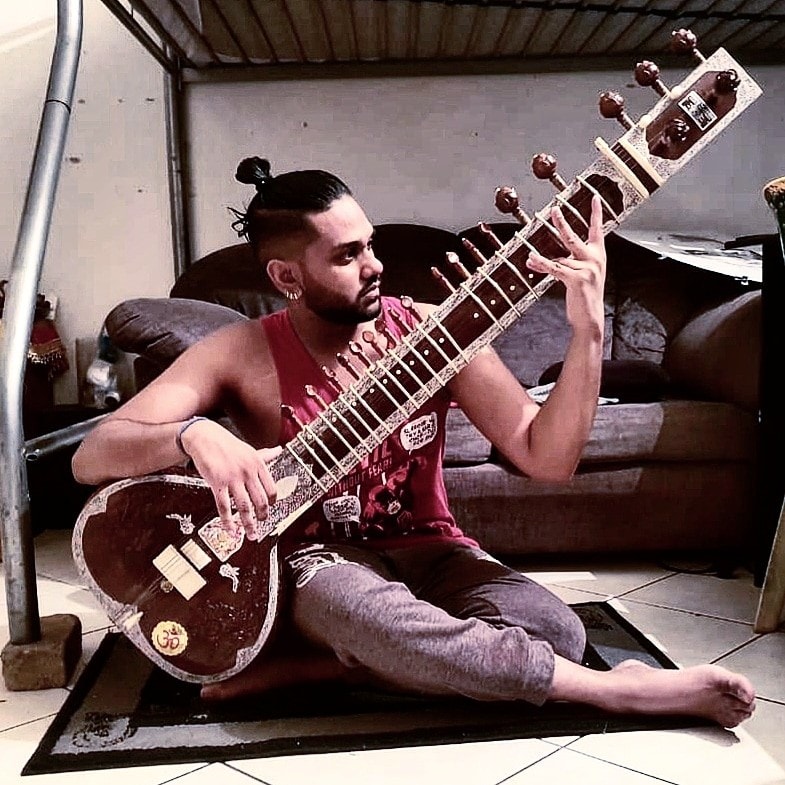
At one point in time, Kiveshan even considered taking up music professionally. “However, music has become something deeply personal and profound to me. I would rather sing in a mandir as a devotee than take it up as a professional pursuit,” says the artist who associates music with spirituality and meditation.
Giving voice to the diaspora
In his work and research, Kiveshan Thumbiran has projected himself as part of the Indian migrant diaspora (including both indentured and non-indentured migrants). “I had been seeking an answer to the question ‘Who are Indians and why do we not belong?’ long before the recent racially fuelled aggression to the Indian community which began with the Zuma protests,” he tells.
The artist’s quest to understand the role of the ‘Indian body’ in present-day South Africa will soon be the foundation for his Ph.D. research. He holds two significant aspirations – first, to attain a Ph.D. focused on integrating art and Hinduism in a compelling thesis, and second, to expand the reach of his work beyond South Africa. “My eyes are set on finding a way to the prestigious India Art Fair,” he tells. Kiveshan also intends to develop a syllabus that empowers creative youngsters to become catalysts for positive change across the African nation.
- Follow Kiveshan Thumbiran on Instagram, Facebook, LinkedIn and Twitter
- Find more details at kiveshan.myportfolio.com


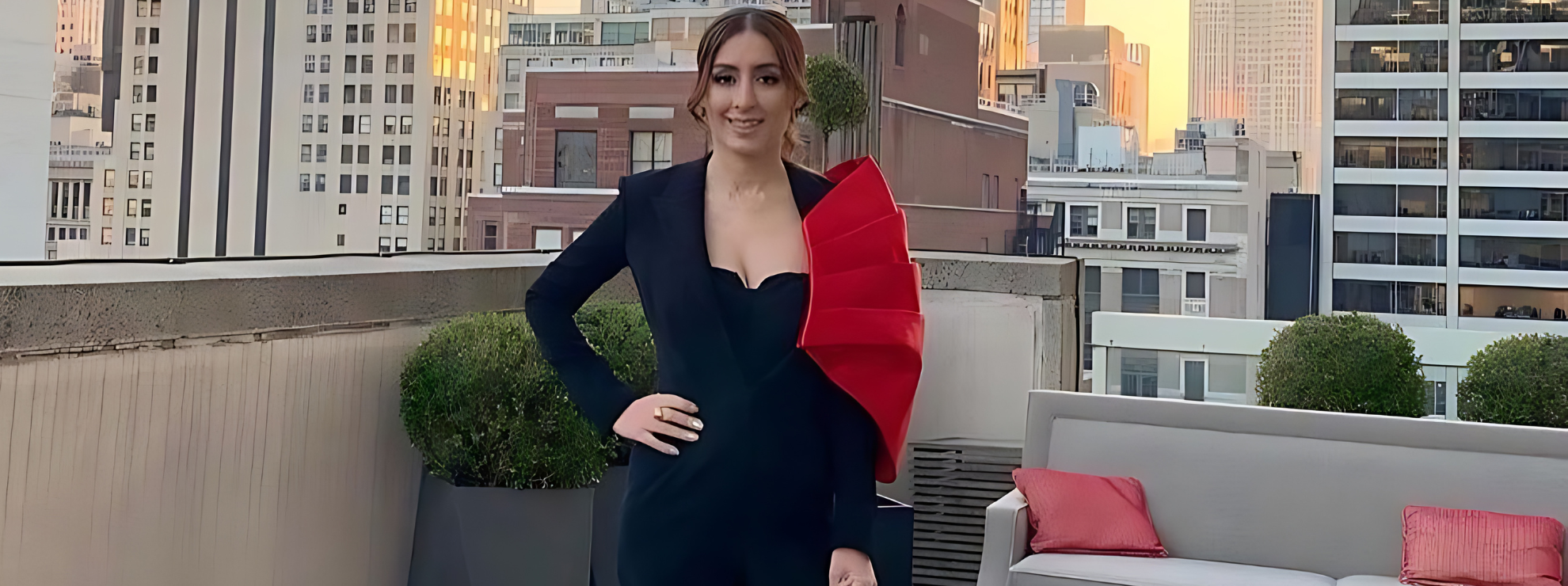
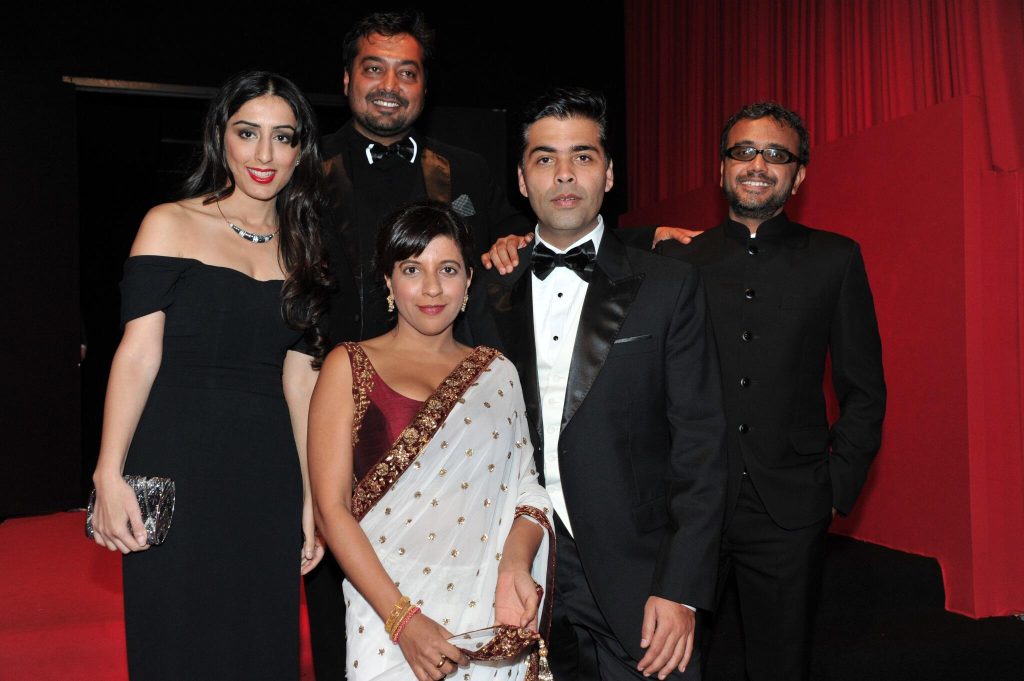 Ashi Dua with Karan Johar and Anurag Kashyap[/caption]
Ashi Dua with Karan Johar and Anurag Kashyap[/caption] Photo: Instagram[/caption]
Photo: Instagram[/caption]
 Anurag Shanker[/caption]
Anurag Shanker[/caption]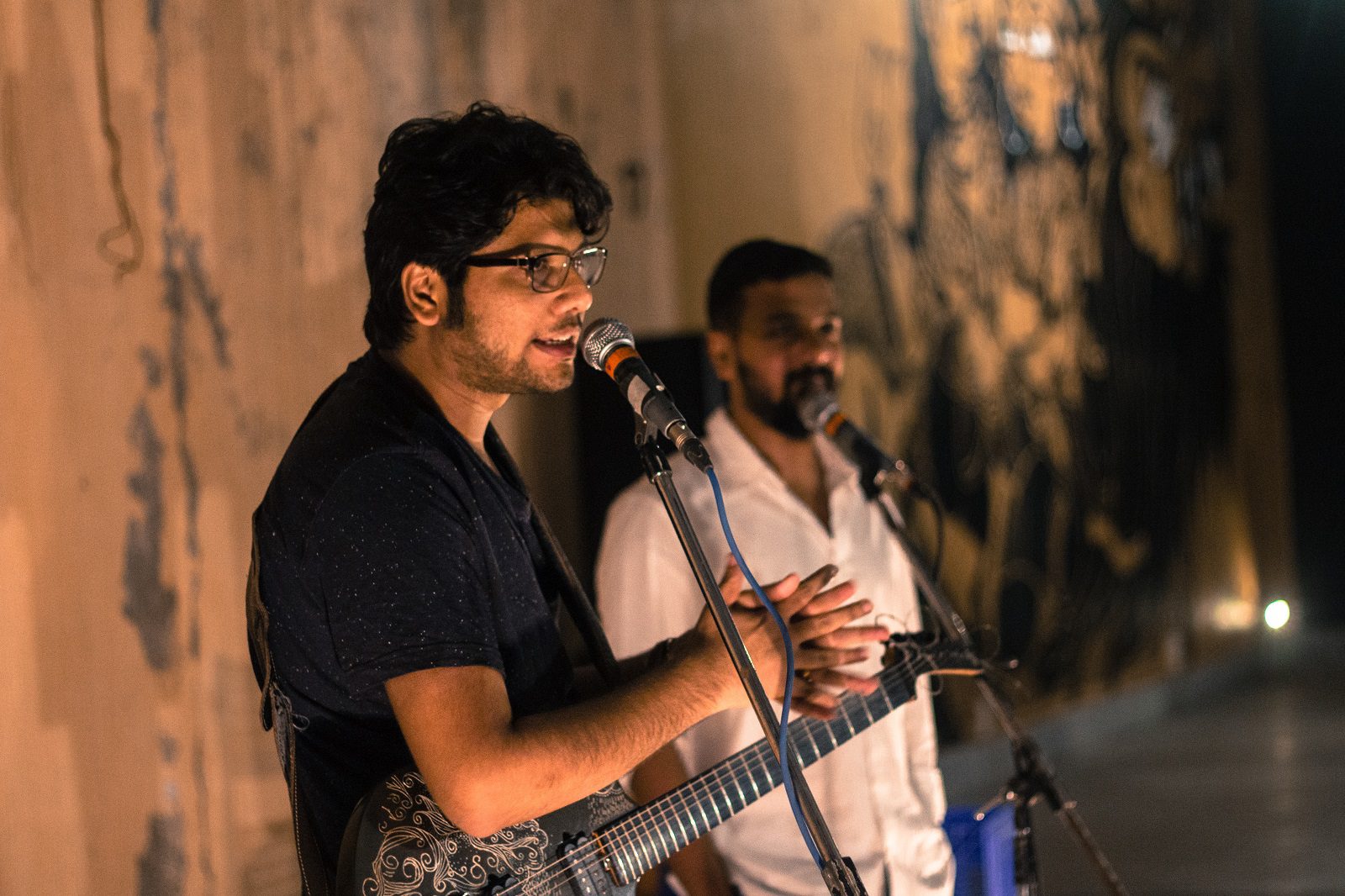 Live with Namit Das. Picture: Vaishnavi Suresh[/caption]
Live with Namit Das. Picture: Vaishnavi Suresh[/caption]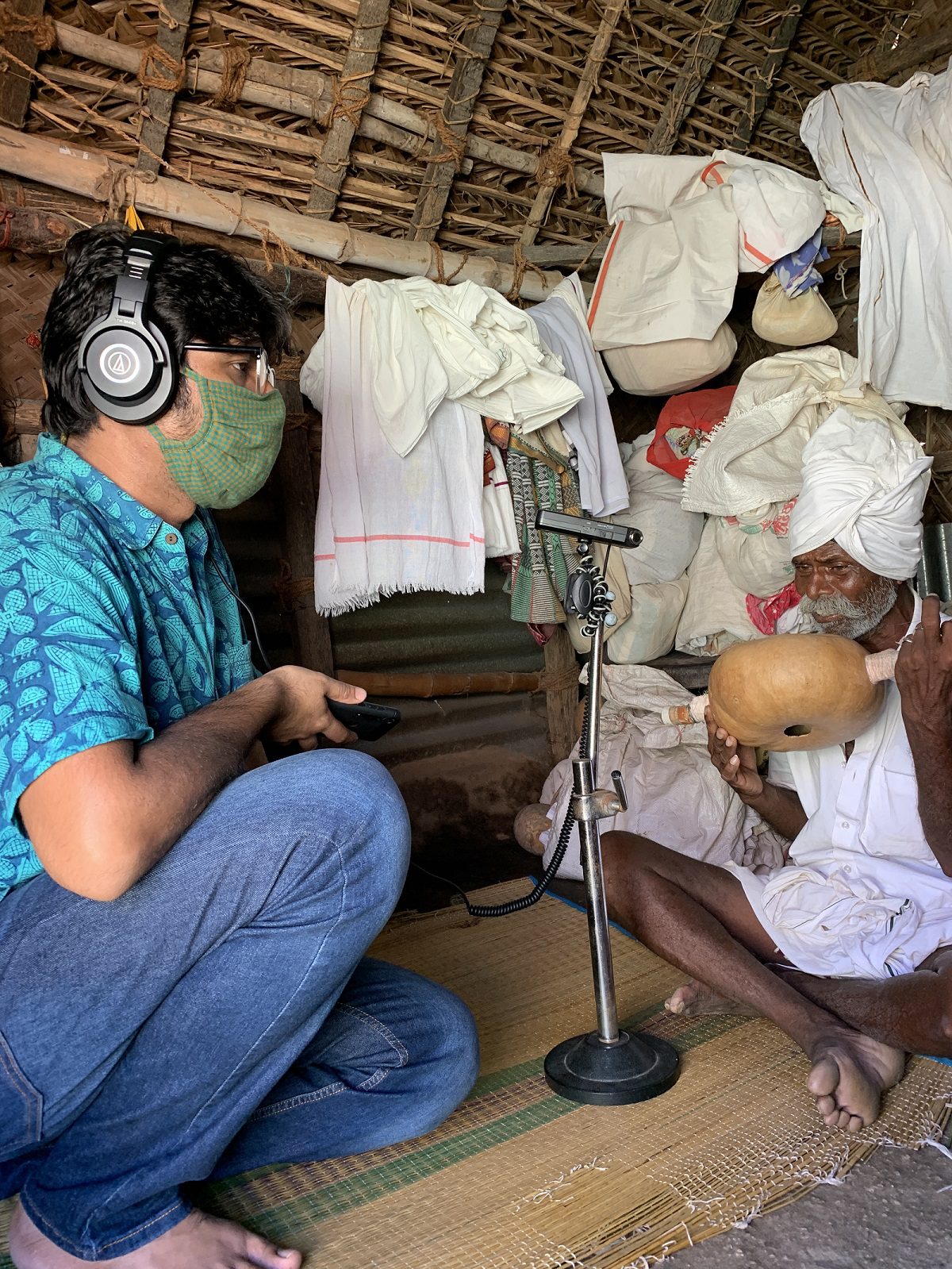 The composer recording Kinnaram from Tamil Nadu[/caption]
The composer recording Kinnaram from Tamil Nadu[/caption]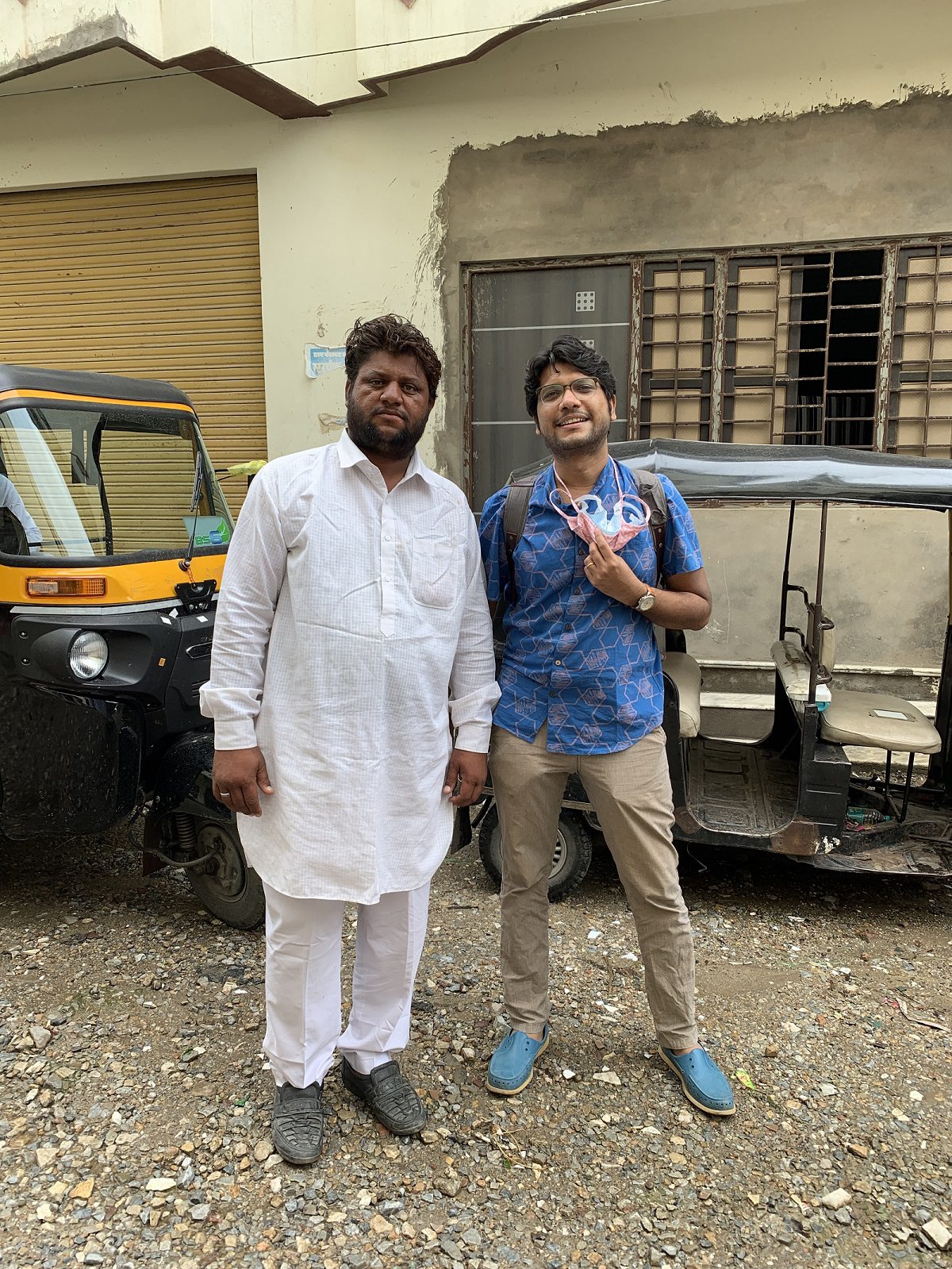 Anurag with Manganiyar singer Peeru Khan[/caption]
Anurag with Manganiyar singer Peeru Khan[/caption]
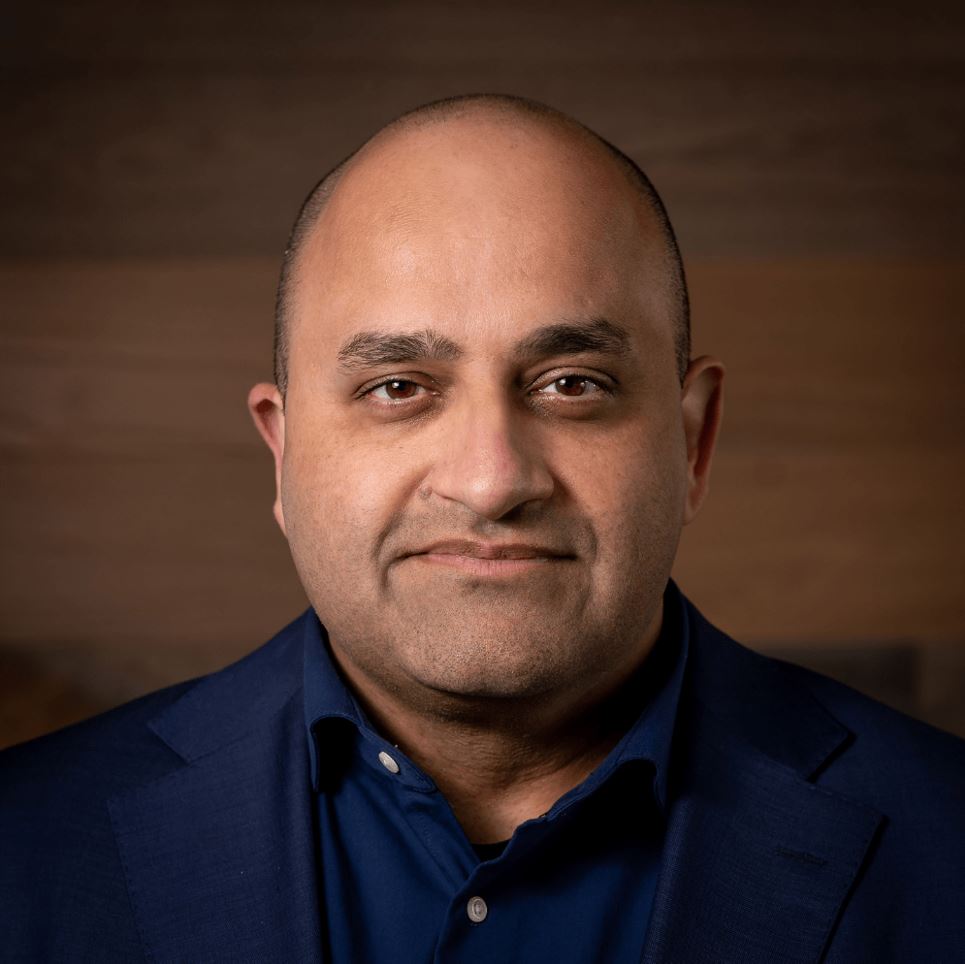 AC Charania[/caption]
AC Charania[/caption]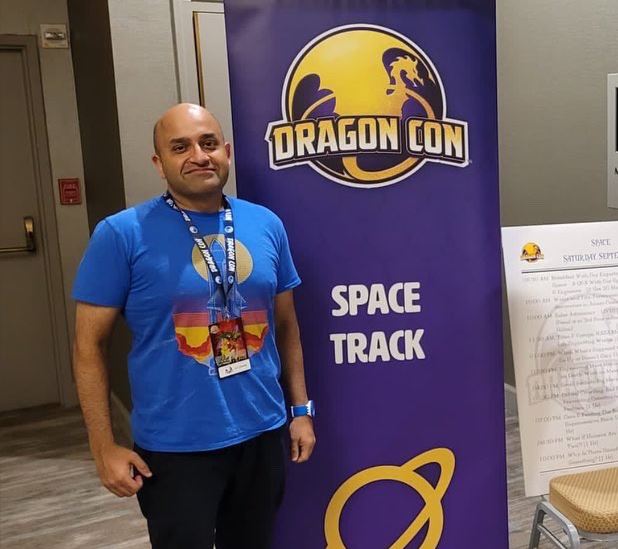
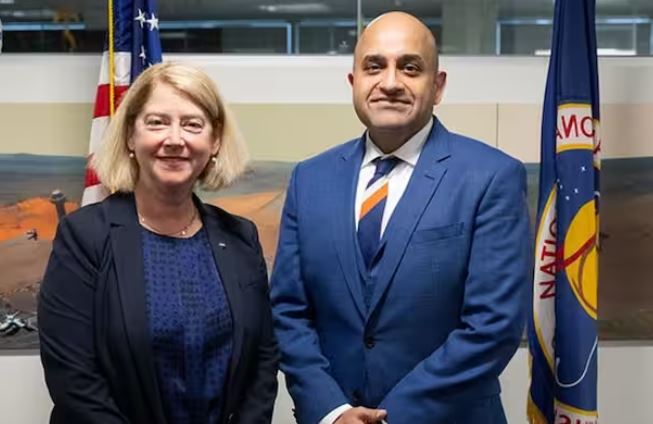 AC Charania with a NASA official[/caption]
AC Charania with a NASA official[/caption]
 Chef Garima Arora[/caption]
Chef Garima Arora[/caption]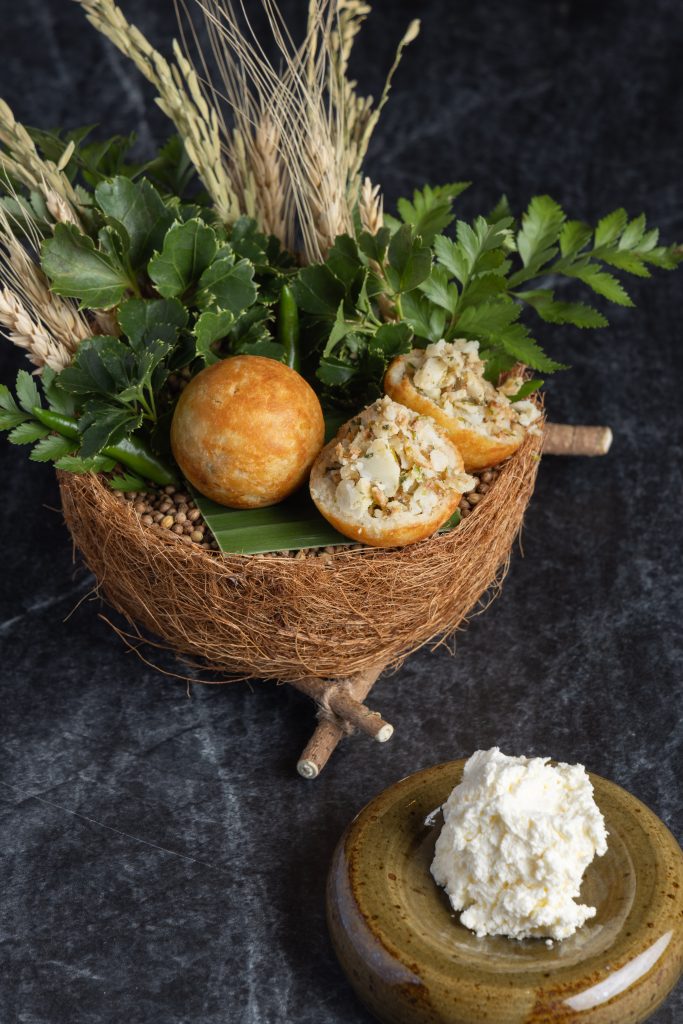 Gobi parantha served at Gaa[/caption]
Gobi parantha served at Gaa[/caption]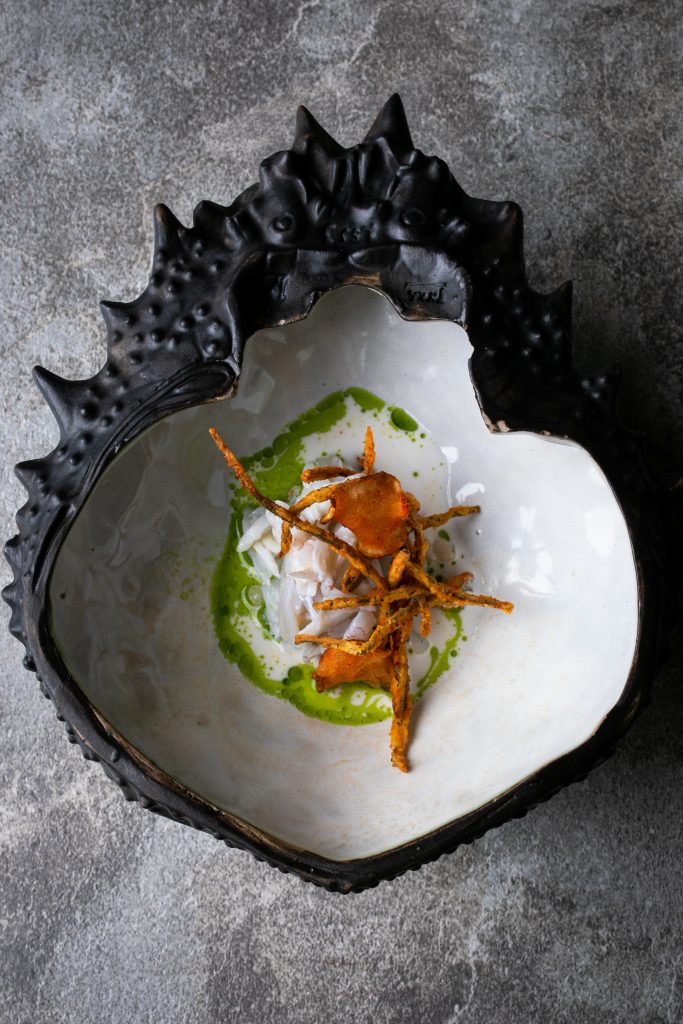 Summer Curry served at Gaa[/caption]
Summer Curry served at Gaa[/caption] Gaa restaurant in Bangkok[/caption]
Gaa restaurant in Bangkok[/caption]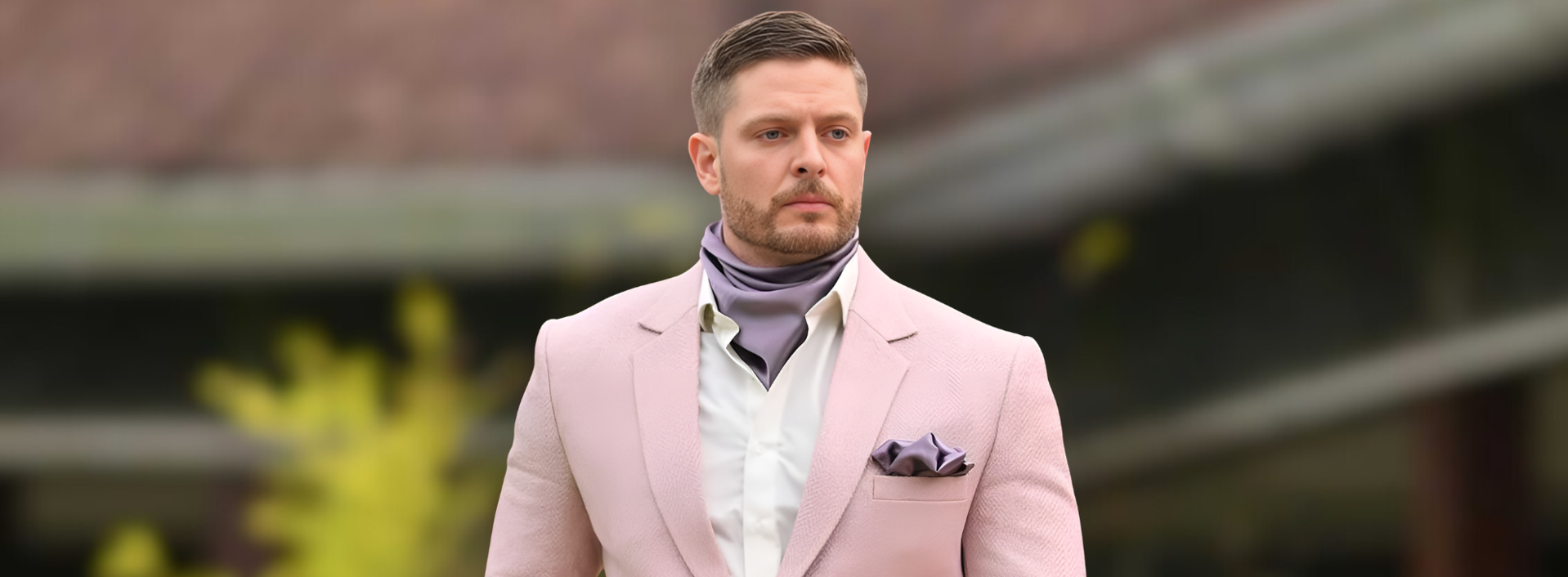
 Jason Shah[/caption]
Jason Shah[/caption]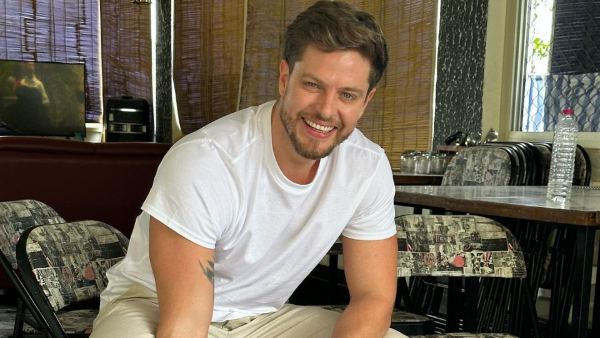 Jason Shah[/caption]
Jason Shah[/caption]